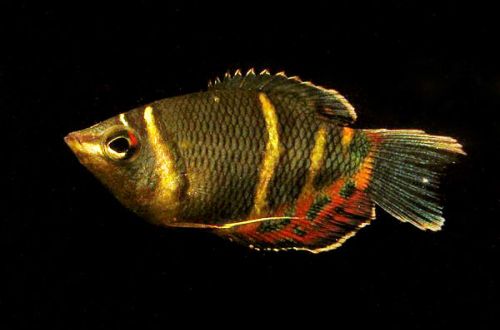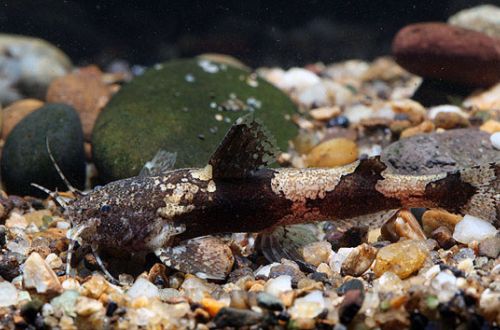
false black tetra
False black tetra or Gymnocorymbus bluish-spotted, scientific name Gymnocorymbus thayeri, belongs to the Characidae family (Characinaceae). Named after patron N. Thayer, who sponsored a major ichthyological expedition to South America in 1865-1866.

The fish is a close relative of the popular Black Tetra in the aquarium trade, but unlike it, it has a golden or silver base color. Under certain lighting, blue tints may appear. There are (not always) two black marks in the body pattern.
Adult individuals reach a length of about 5 cm. Sexual dimorphism is weakly expressed, with no obvious visible differences between male and female.
Brief information:
- The volume of the aquarium – from 100 liters.
- Temperature – 19-24°C
- Value pH — 5.5–7.3
- Water hardness – soft to medium hard (4–18 dH)
- Substrate type – any
- Lighting – subdued or moderate
- Brackish water – no
- Water movement is weak
- The size of the fish is about 5 cm.
- Feeding – any food of suitable size
- Temperament – peaceful
- Keeping in a flock of 6-8 individuals
Habitat
Comes from South America. Initially, it was believed that the natural habitat was limited to the upper reaches of the Amazon River in Bolivia and Colombia. Later, the fish was found in its middle and lower reaches, as well as in the Orinoco River basin.
Maintenance and care, arrangement of the aquarium
Content requirements are similar to those of Black Tetra. Provided that the necessary hydrochemical composition of water is maintained, the False Black Tetra will not cause trouble even for a novice aquarist. For a flock of 6-8 individuals, a spacious tank of 100 liters or more will be required. When designing, it is important to provide open spaces for swimming. You should not allow excessive overgrowth of the aquarium, so it is recommended to place the plants on the sides.
Maintenance is standard and consists of at least two obligatory procedures: weekly replacement of part of the water with fresh water and removal of accumulated organic waste (feed residues, excrement). This is true with the current filtration system. Without water purification, maintenance of the aquarium must be carried out more often.
Food
An omnivorous species, will accept most popular feeds. The basis of the daily diet can be dry food (flakes, granules). A good choice would be special products for Tetra, produced by many manufacturers. As a rule, they already contain all the necessary trace elements for healthy growth.
It is worth remembering that with a lack of plant components in the feed, the fish will damage the delicate parts of the plants.
Behavior and Compatibility
Peaceful active fish. It is advisable to purchase flocks of 6 individuals. Compatible with other Tetras and other species of comparable size and temperament.





